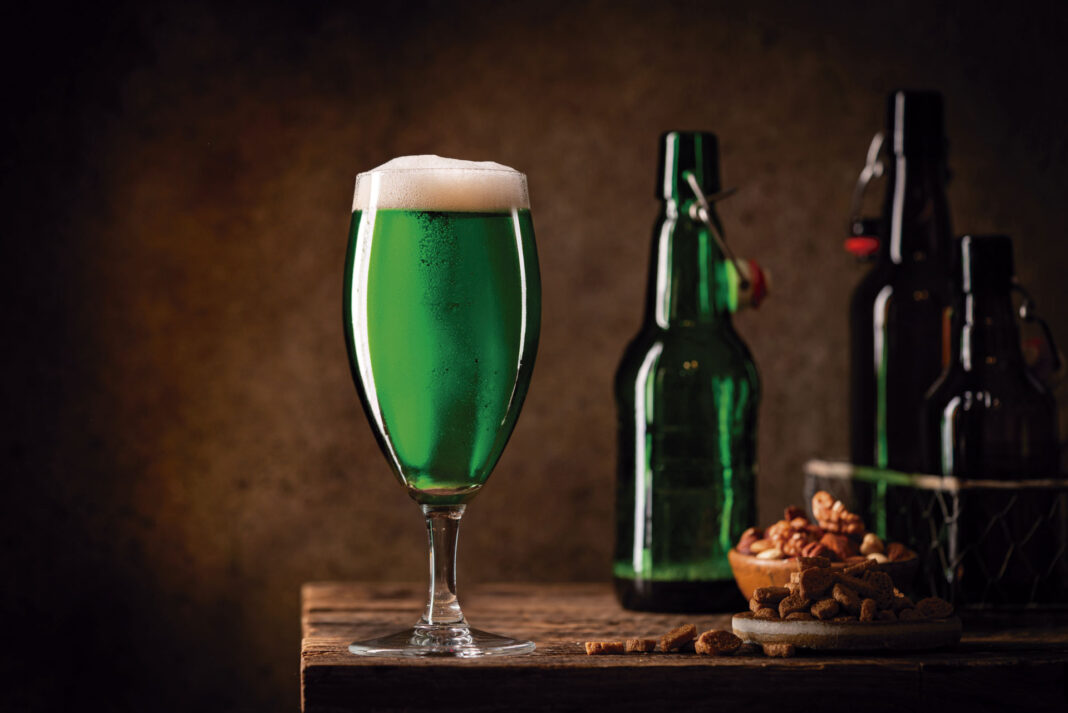The custom of drinking green beer on Saint Patrick’s Day didn’t originate in Ireland, nor does it have ancient roots, but now there’s a beer that’s made to be green!
While the world turns green every March 17th to celebrate St. Patrick’s Day, the custom of drinking green-coloured beer is a relatively recent one that originated in the United States in 2014. The story goes that Dr. Thomas Hayes Curtin, an Irishman living in New York City, was celebrating the holiday at a bar in the Bronx when he noticed that everything around him was green – except for the beer, which was its usual golden hue. Annoyed by this, he decided to add a few drops of blue food colouring to his beer, transforming it into a festive shade of green.
If, however, your preferred tipple is the Internationally acclaimed Irish dry stout, Guinness (made since 1759), which is black, the solution is to buy green food colouring and add one drop per 0.35 litres (12 ounces) of beer. The same applies if you’re a fan of the equally dark Porter. Of course, you can also dye a Jameson’s (Irish whiskey), a Bailey’s, a Magners (cider) or any other drink (but whatever you do, ensure it’s Irish!).
Alternatively, you can celebrate Saint Patrick’s with a real green beer. Yes, it actually exists! It’s called ‘Moritz St Patrick’s Day’ and it’s the first green beer crafted by the Moritz Brewery in Barcelona, which has been brewing beer since 1856. Moritz St Patrick’s Day is a limited edition, unpasteurised beer that boasts a vibrant green colour achieved using a 100% natural blend of spirulina and cardamom. Currently, it is only available for on-tap consumption at the Fábrica Moritz Barcelona or at Casa Moritz. But it will be on sale exclusively at the Moritz store between 17th to 20th March.
Beyond its eye-catching hue, Moritz St Patrick’s Day offers a round, dry mouthfeel. It showcases a full, white head and a symphony of aromas thanks to its American Mosaic and Simcoe hops, which bring out fruity notes of pear, melon and floral nuances. Tasting notes reveal other interesting details such as its medium bitterness (35 IBUs), its mild alcohol content of 5.4% vol., its slightly bitter and persistent aftertaste and its ideal serving temperature of between 3 and 5º C.




